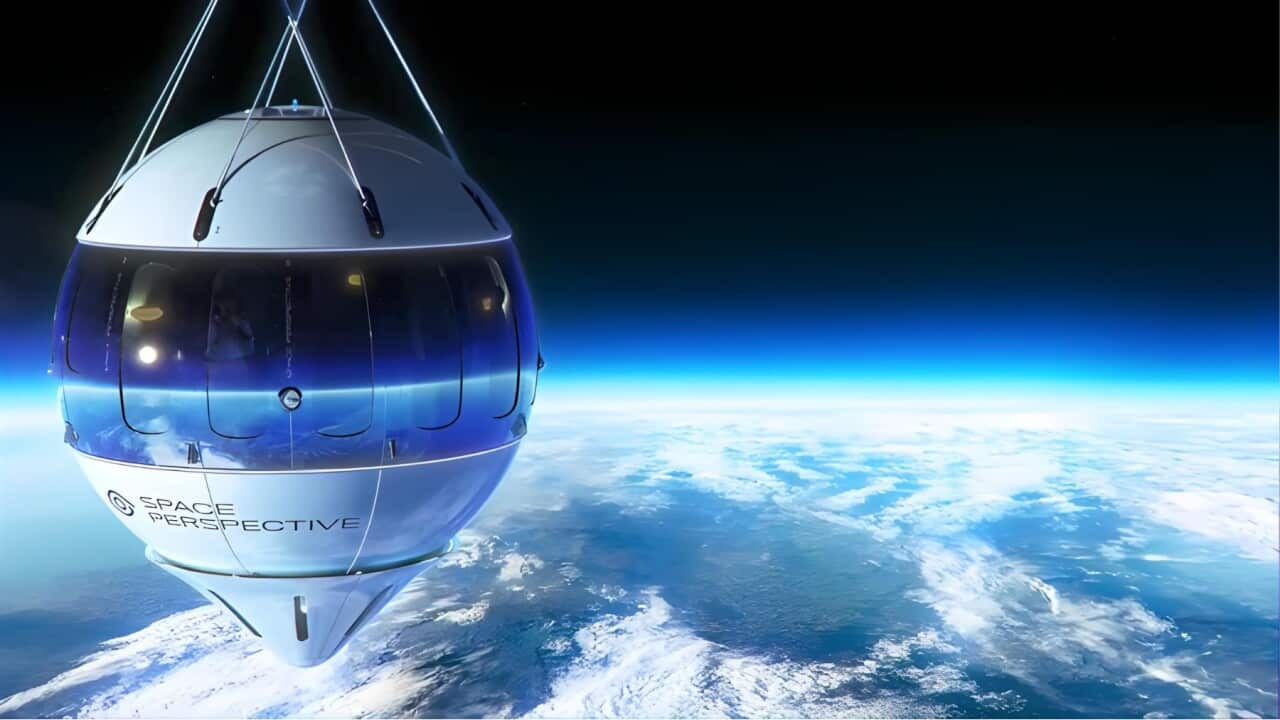TRANSCRIPT
Ever since humans have travelled to space the question of what and how to eat has been a particular challenge.
Function and nutrition have been the priority, meaning space food doesn't have a reputation for being particularly tasty.
The first man in space, cosmonaut Yuri Gagarin, squeezed beef and liver paste into his mouth from an aluminium tube.
Thanks to technological advancements, things have improved since then.
Here's NASA astronaut Megan McArthur in 2022, telling America's Test Kitchen she enjoys a range of foods at the International Space Station, including cous-cous, oatmeal and chicken fajitas.
But she admits there's still plenty of constraints to do with function, not flavour.
"One thing the food has in common is it has to be shelf stable, so we don't have a very big refrigerator to keep food in, that's fresh, and we get cargo resupply every couple of months so the food has to stay edible through all of that time. So we have different types of ways of preparing food, we have this food that's heat-treated to be shelf-stable - it's kind of like canned food. So it's food that's still wet and has a sauce with it, but it doesn't need to be refrigerated. Then we have other kinds of food that's been dehydrated, that's had all the moisture taken out of it, and we have to add the water back into it when we're going to eat it."
But now space food looks set to get a lot more glamorous, with Michelin-starred Danish chef Rasmus Munk taking over an experimental new dining experience.
In late 2025, six paying guests will ascend to the edge of space to watch the curvature of the earth while they eat.
It’s one of the latest offerings by private space exploration firms hoping to sell seats to the public, including Blue Origin, Virgin Galactic, and SpaceX.
Mr Munk and six guests will fly aboard Florida-based startup Space Perspective’s Spaceship Neptune, more a “SpaceBalloon” than a rocket.
The company says its pressurized capsule, attached to a hydrogen-filled balloon, will lift to an altitude of around 100,000 feet above sea level.
Mr Munk says the general increase in restaurant quality is making people hungry for new experiences - including eating among the stars.
"I think fine dining, in general, is changing a lot. And I think you, as a guest, require more an experience in the future. I think there will be less fine dining restaurants where it's just the food and like good food with maybe a couple of waiters more and a tablecloth that's been ironed. I think because the quality of food is increasing a lot, and there's coming so many different food stands and small restaurants and bistros and trattorias, so we are very privileged in that way. So, I think for fine dining, the guests will expect some more story to it and an experience."
The chef's earthbound restaurant Alchemist has held two Michelin stars since 2020 and last year was ranked fifth best restaurant in the world.
His new menu for the six guests - each paying $495,000 U-S dollars for the experience - is inspired by the history of space innovation, although the flight won't technically reach space.
Spaceship Neptune will ascend to around 30 kilometres, below the traditionally accepted “Karman” space line of 100 kilometres.
The menu will also be a far cry from meals eaten by past and present space explorers.
Mr Munk wants the ingredients he's developing to draw attention to issues closer to home.
"One of them is like the aerogel, which is very, very light gel here. And we, right now, (are) working on an edition where we put it with we call stardust outside, which is a jellyfish protein that can light up in the dark. So, we can maybe create these stars inside the capsule. We are also working on an edible piece of space junk from a satellite. And then, we want to talk about some of the things going on on the planet as well. So, all from deforestation to temperatures rising and the garbage in our seas."
Rasmus Palsgaard is a food and wine writer.
He says it shows diners with money are looking for more extravagant experiences, beyond the food that's served.
"Some restaurants are getting more and more extreme, it seems. More wealthy people or big companies have a desire to really create something special that is more than a meal. And, obviously, that's very exciting for foodies and people who are curious to try extreme dining experiences."
But while aerogel and jellyfish protein are a novelty for diners with cash to splash, what foods do professional astronauts miss the most from Earth?
Former NASA astronaut Mike Massimino told WIRED in 2019 his craving was a little more basic.
"I missed pizza in space. On my first space flight mission I ordered pizza from space from a pizzeria near the Kennedy Space Center. I was able to contact them through email and say, 'this is what we want. This is our landing time, we would like delivered to the hotel we stayed at.' That's how much I missed pizza."













